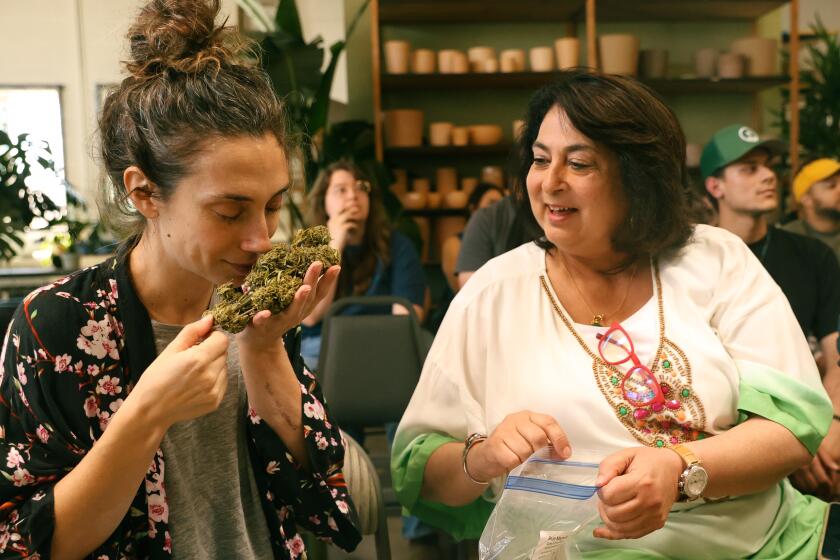For Christmas, Growers Get Warmer Weather, Some Rest
A warming trend brought California citrus growers what they wanted most for Christmas--a respite from labor-intensive efforts to keep their fruit from freezing and the prospect that part of their crop could be salvaged.
Some growers, such as Nick Hill, spent Christmas Eve and the wee hours of Christmas morning tending to their trees with wind machines that blow warm air. But Hill was able to skip the more elaborate measures that had been necessary earlier in the week, such as warming his navel orange trees with water.
Best of all, Hill would be able to spend Christmas night asleep in bed for the first time in several days.
“It’s something I’ve been looking forward to,” said Hill, who manages Greenleaf Farms in the Central Valley towns of Orange Cove and Sanger, near Fresno.
After three nights with temperatures dipping down into the teens, the mercury stayed above the mid-20s on Thursday night and was forecast to dip no lower than 28 degrees Friday night. By tonight, temperatures in the region should be safely in the low 30s even in the dead of night, said Tom Dunklee, chief atmospheric scientist at Atmospheric Research Associates in Snoqualmie, Wash. The periods of coldest weather are also getting shorter, Dunklee said.
This gradual warming trend is the best that growers could hope for after arctic air devastated California’s orange and lemon crops.
“This is what we need,” said Joel Nelsen, president of the California Citrus Mutual, the growers’ trade organization. “Going between two extremes is the worst-case scenario for the fruit.”
When citrus freezes, the cells inside the fruit crystallize and pop. Then, when the cells thaw, the juice seeps through the skin, leaving the fruit dry and inedible. But if the fruit thaws slowly, some of the fruit could heal itself and be salvageable for market, Nelsen said.
That would be a welcome bit of good news for state growers, whose damages are expected to top $600 million. California’s $1.5-billion citrus industry normally produces 90% of the country’s lemons and 20% of its oranges, including 80% of the oranges eaten as fruit. But early estimates are that roughly half of the state’s orange crop and at least 15% of the lemon crop have been destroyed.
After a tense week with little sleep, many growers decided to take a few days off before making new damage assessments.
Because fruit rots from the inside out, it takes two or three days for signs of decay to become visible. If rotting fruit is picked and packaged prematurely, its bacteria could spread to otherwise usable fruit and cause unnecessary damage.
“Your natural inclination is to get out there and start cutting fruit,” Nelsen said. “But if you allow your emotions to run away with it, you could be making a lot of mistakes.”
Once the fields thaw out, it will be easier for growers to tell how much of their crops can be salvaged, said Bob Krauter, a spokesman for the California Farm Bureau, the state’s largest farmers group.
If some oranges are decay-free but aren’t of good enough quality to eat, they could be processed to add color to orange juice produced in Florida, and the rinds could be ground up for use in fragrances. That would give growers a return of “a few pennies a pound”--substantially less than the $1- to $2-per-pound that oranges normally command, Nelsen said.
Oranges that do make it onto grocers’ shelves could triple in price, if wholesale rates are any guide. Prices are expected to begin rising this week, although analysts say retailers may absorb some of the loss.
In the meantime, consumers could substitute California oranges with fruit from Florida, Texas and Arizona. All three states were “fairly full with citrus prior to the freeze and farmers were frantically harvesting in advance of the cold wave,” Krauter said.
Consumers may also be eating more melons, grapes, nectarines, plums and peaches from Central and South American countries such as Chile.
“In agriculture you have a saying that one man’s crisis is another man’s profit,” Nelsen said. “The shortage of fruit is going to be significant. Consumers will substitute with some other commodities.”
*
Associated Press was used in compiling this report.




